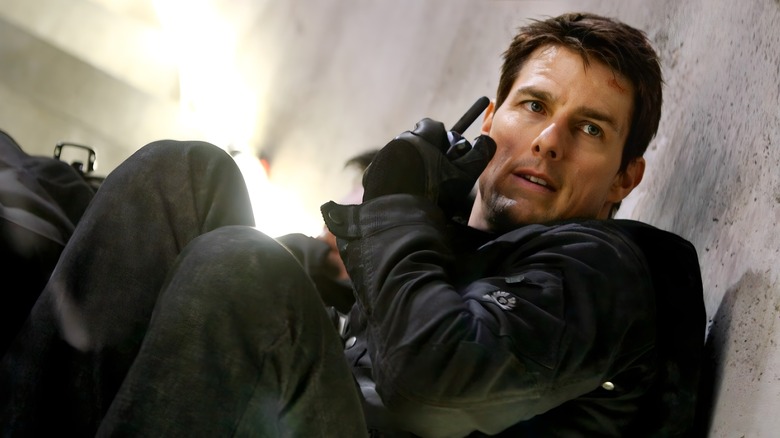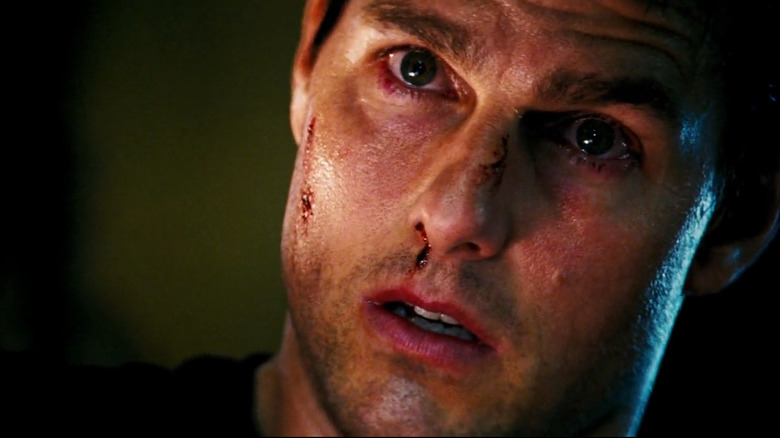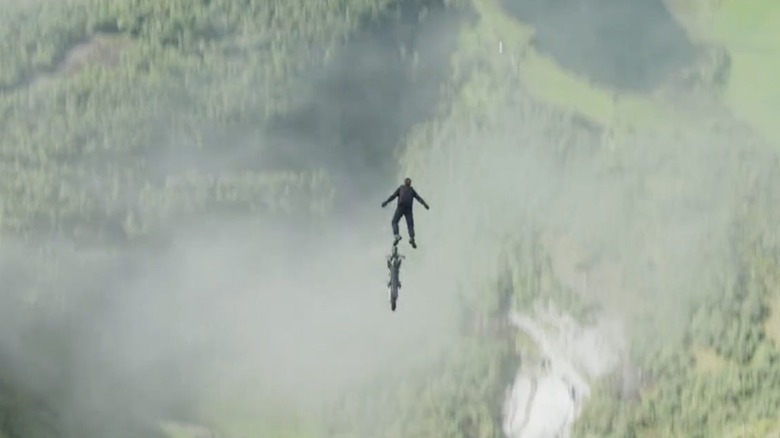
In 2018's "Mission: Impossible—Fallout," the dastardly rogue agent Solomon Lane (Sean Harris) revels in messing with the mind of Ethan Hunt (Tom Cruise) by making him question the principles and values of his entire life spent working for the IMF (Impossible Mission Force). In particular, Lane points out the IMF's code with regards to accepting missions given to their agents; the operative phrase, as adopted from the original 1966 television series, being "your mission, should you choose to accept it," a wording that implies consent and power of choice.
That choice was unfortunately not afforded to residents of Los Angeles back in 2006, when "Mission: Impossible III" was about to be released in theaters. As some lucky (or unlucky) folks discovered, there was a highly suspicious-looking red plastic box attached with wires to a news rack in Santa Clarita, California, a device that enough people reported so as to attract the attention and action of an L.A. County sheriff's bomb squad. As it turned out, the device — which was only one of 4,500 — was actually part of a viral marketing campaign for "M:I III," leading to a goofy "life imitates art" incident and ramifications that neither Paramount Pictures, the Los Angeles Times nor the local authorities would've chosen to accept.
The Scourge Of The Singing News Rack

As you may recall, the early '00s were a golden age of wacky movie marketing. ARGs (Alternate Reality Games) were everywhere, created to promote such diverse movies as "A.I. Artificial Intelligence" and "The Dark Knight." This was also the era of the flash mob, where millions of innocent people were subject to sudden outbursts of choreographed dances.
It's likely in this spirit that Paramount and the Los Angeles Times concocted their "singing news rack" campaign for "M:I III." Their plan was for the aforementioned red plastic boxes — more specifically a "digital musical device," as the Times described it — to play the "Mission: Impossible" theme song when a patron opened the news rack. According to Times officials, this was intended to make an "extraordinary mission" out of the "everyday news rack experience."
The plan worked better than they'd bargained for: on April 28, 2006, a resident of Santa Clarita, California reported a suspicious device hooked up to an L.A. Times coin machine at the intersection of Sand Canyon and Soledad Canyon. Additionally, at the Veteran Affairs Medical Center in West Los Angeles, another one of the singing boxes was discovered.
The fallout from these reports wasn't as bad as the potential fallout in "Fallout," but it still wasn't too good: in Santa Clarita, the bomb squad was called in, where they subsequently blew up the suspicious news rack. Meanwhile, in West L.A., the Medical Center was evacuated, and reportedly about 300 people and patients ended up displaced.
From Stunt Advertising To Advertising Stunts

What began as a seemingly harmless, cutesy bit of promotion spiraled into a newsworthy incident, forcing Paramount to rethink their entire marketing strategy for the "Mission Impossible" movies going forward. This was due not just to bad press but the threat of legal action: according to Film Stories, about eight months after both incidents occurred the studio was warned of a possible federal lawsuit by assistant US attorney Linda Kontos, with the cost of damages to the Medical Center alone being tallied at $92,855.77.
Whether things were settled out of court (the most likely outcome) or not, Paramount certainly never revisited the idea of attaching digital boxes to news racks or any other such promotion. Instead, Tom Cruise himself became the most major selling point of the series after that — not just his movie star power, but more specifically his ability and willingness to perform all sorts of dangerous feats for the cameras. It's a strategy that's worked pretty well all around, paying off for Paramount, Cruise and the "Mission: Impossible" series equally.
Though many of us believe this approach means that the chances of Cruise fatally injuring himself while making a movie are now very high, at least it means that no bomb squads will be called or hospitals evacuated just so a news rack door can play the "Mission: Impossible" theme. For a series that keeps getting a hellvua lot more impossible, it's as close to a win-win scenario as we're gonna get.
Read this next: The 14 Greatest Action Movies Of The 21st Century
The post How A Mission: Impossible 3 Promotion Tool Turned Into A Bomb Scare appeared first on /Film.